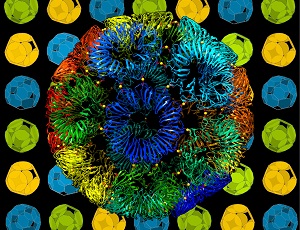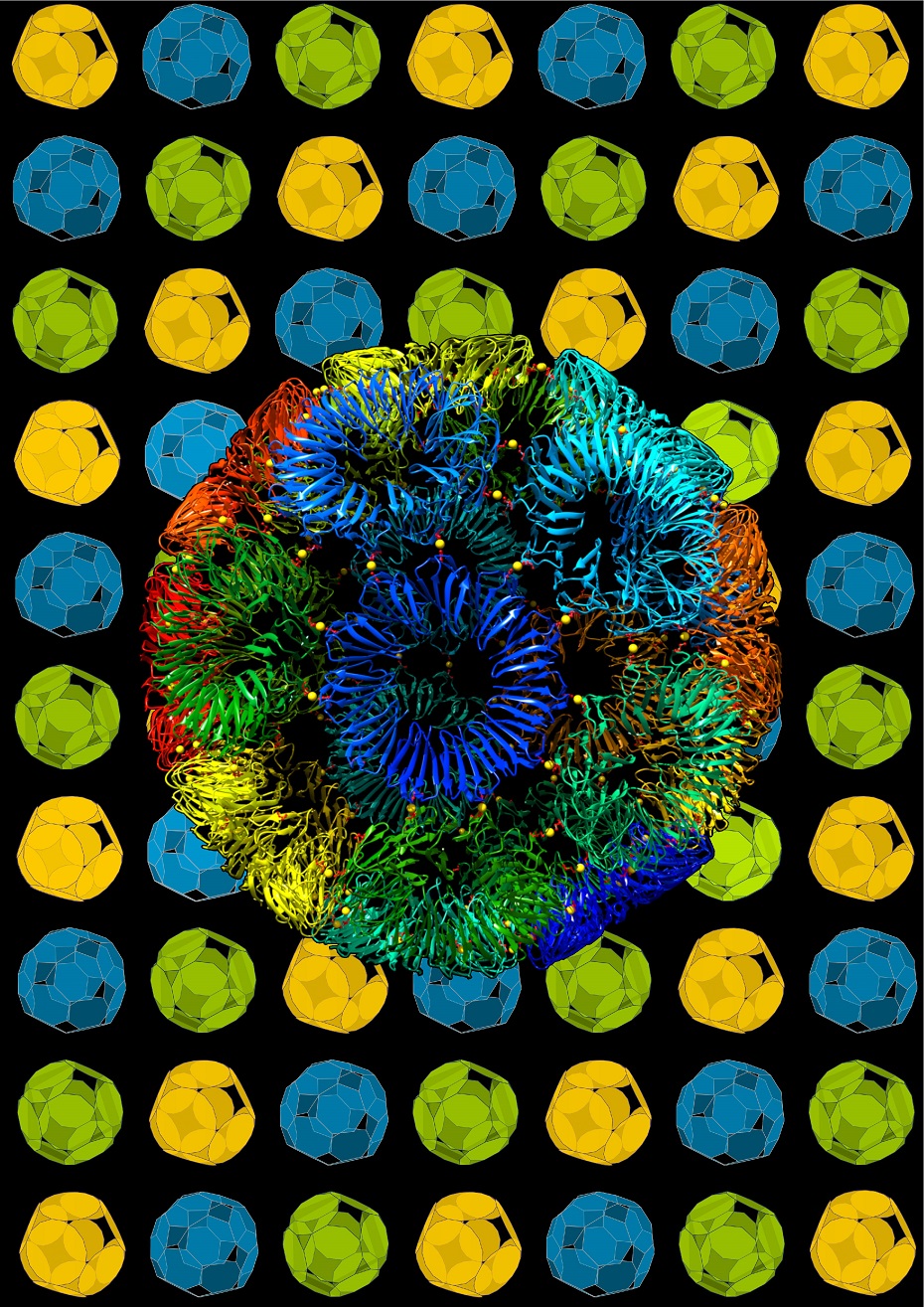
An international group of researchers from the Malopolska Centre of Biotechnology at the Jagiellonian University have produce a super-stable artificial protein ball that apparently defies the rules of geometry and may have applications in materials science and medicine. The results of the research will be published in the forthcoming issue of Nature.
Every role playing gamer knows that there are restrictions governing the shape of dice; try to make a six-sided die by replacing the square faces with triangles and you will be left with something horribly distorted and certainly not fair. The reason for this is that there are geometrical rules describing what kind of shapes are allowed to be the faces of die-like shapes, the so-called regular convex polyhedra. In nature such shapes are also common at the microscopic level. Usually made from many proteins and having a hollow interior, these nanoscale objects are known as protein cages and they carry out a variety of important tasks. The most famous example are viruses, where the cage carries viral genetic material into host cells.
Researchers are interested in making artificial protein cages in the hope that they may be able to design them to have useful properties not found in nature. There are two challenges to achieving this goal. The first is the geometry problem: some proteins may have great potential utility but seem to be ruled out because they have the wrong shape to assemble into cages. The second problem is complexity: in nature the many proteins that form a protein cage are held together by a complex network of chemical bonds and these are very difficult to predict and simulate.
In the new studies, headed by Dr Jonathan Heddle from the Bionanoscience and Biochemistry Laboratory of the Malopolska Centre of Biotechnology at the Jagiellonian University and funded largely by Poland’s National Science Centre, researchers found a way to solve both of these problems. “We were able to replace the complex interactions between proteins with a simple ‘staple’ consisting of a single gold atom,” explains Dr Heddle. "This simplifies the design problem and allows us to imbue the cages with new properties such as assembly and disassembly on demand.” The research has also found a way to get around the geometrical problem: “The building block of a protein cage is an 11-sided shape”, says Dr Heddle “Theoretically this should not be able to form the faces of a regular convex polyhedron." However, the research has found that while this is mathematically true, some so-called “impossible shapes” can assemble into cages which are so close to being regular that the errors are not noticeable. “What this means is that we can now use proteins which we previously would not have considered because they are theoretically unable to form cages", explains Dr Heddle.
The potential implications of the work are far-reaching. "What we, together with our collaborators have found, is simply the first step", notes Dr Heddle, who hopes that the work can be expanded further to produce cages with new structures and new capabilities and also investigated for potential applications, particularly in drug delivery.
The research was predominantly carried out at the Bionanoscience and Biochemistry Laboratory of the JU Małopolska Centre of Biotechnology. The protein cages were modeled using software created by Agnieszka Kowalczyk, a PhD student of the JU Faculty of Mathematics and Computer Science and Bernard Piette from the Department of Mathematical Sciences at Durham University, UK. Craig Kaplan from the University of Waterloo, Canada, also made an important mathematical contribution to the project.
The research results will be published in the forthcoming issue of Nature. The article, whose main author is Dr Jonathan Heddle, is available at this link: An ultra-stable gold-coordinated protein cage displaying reversible assembly.
Below: A model of the "mathematically impossible" protein cage, around 22 nanometres in diameter, produced by the researchers. The cage is made from 24 copies of an 11-sided, ring-shaped protein each shown in a different colour and held together by single gold atoms (yellow balls). The background shows models of other "Impossible" cages predicted by the work.






